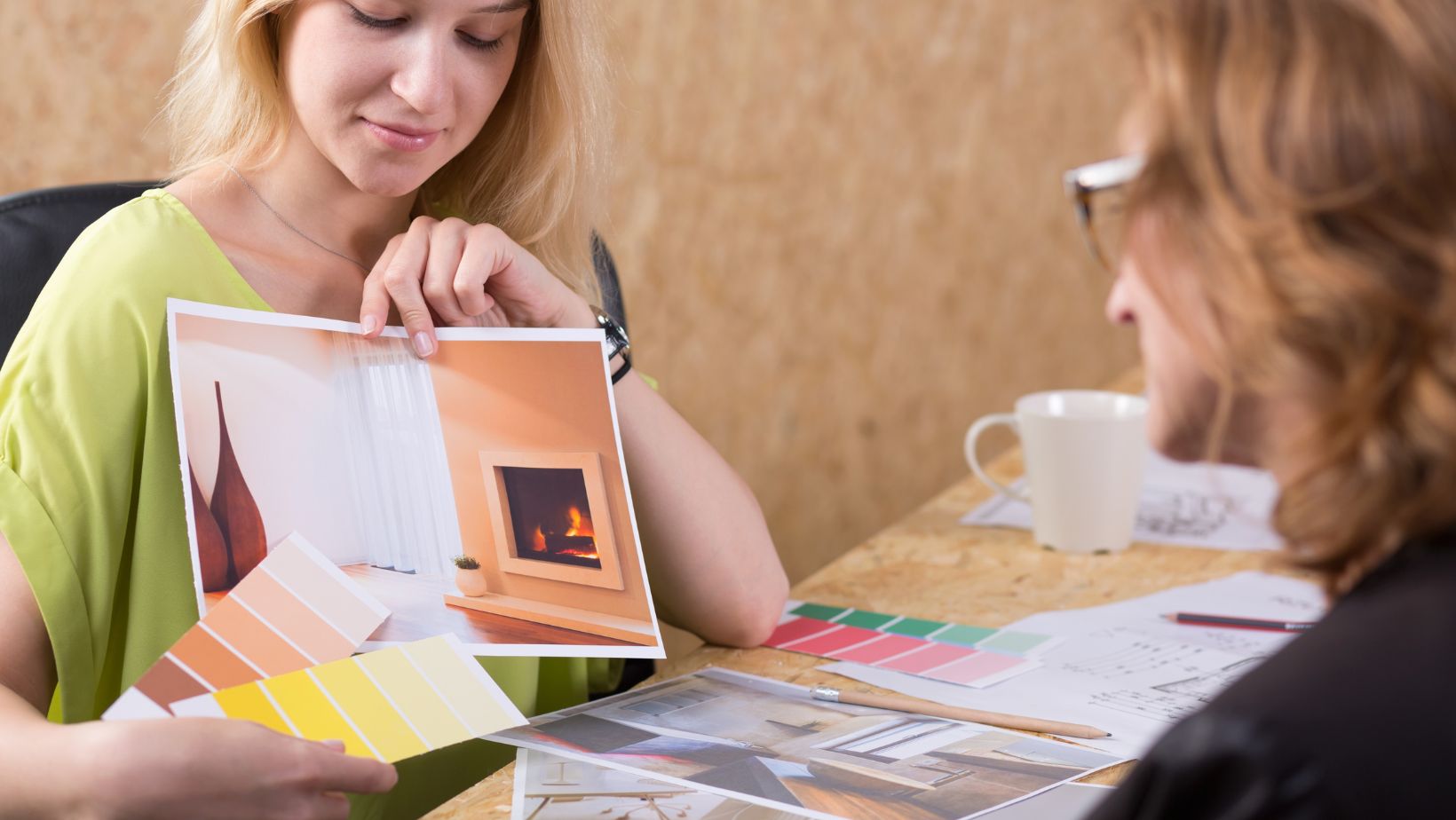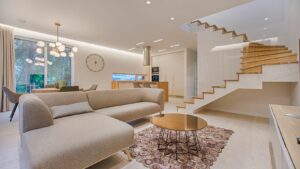 Interior design isn’t just about making a space look good; it’s about creating an environment that feels right. Whether it’s a cozy living room or a sleek office, understanding the fundamental rules of interior design can transform any area into a harmonious haven. These guidelines help balance aesthetics with functionality, ensuring that every room reflects its intended purpose while also resonating with personal style.
Interior design isn’t just about making a space look good; it’s about creating an environment that feels right. Whether it’s a cozy living room or a sleek office, understanding the fundamental rules of interior design can transform any area into a harmonious haven. These guidelines help balance aesthetics with functionality, ensuring that every room reflects its intended purpose while also resonating with personal style.
From color schemes to furniture placement, mastering these design principles can elevate any space. It’s not just about following trends; it’s about knowing how to make choices that enhance comfort and usability. By grasping these essential rules, anyone can create a home or workspace that not only captivates the eye but also nurtures a sense of well-being.
Key Takeaways
- Establish a Focal Point: Identify a primary element in the room to draw attention and create visual interest, enhancing the overall design.
- Consider Scale and Proportion: Select furniture and decor that are appropriately sized for the room to prevent overcrowding and maintain balance.
- Cohesive Color Palette: Use three to five complementary colors throughout the space to foster harmony and a unified look.
- Utilize Layered Lighting: Incorporate ambient, task, and accent lighting to create a versatile atmosphere that caters to different activities and moods.
- Prioritize Functionality: Design spaces according to their intended use, ensuring arrangements facilitate movement and accessibility for increased comfort.
- Integrate Texture and Patterns: Mix various materials, textures, and patterns to add depth and visual interest while maintaining a cohesive design.
Interior Design Rules
Adhering to essential interior design rules enhances both beauty and functionality in spaces. The following guidelines provide a framework for effective design:
- Establish a Focal Point
Identify a primary element in the room that draws attention. This could be a piece of art, furniture, or a fireplace. Ensuring that the focal point is prominent helps create visual interest. - Consider Scale and Proportion
Evaluate the size of furniture and decor in relation to the room dimensions. Selecting appropriately sized items prevents overcrowding and promotes a sense of balance. - Maintain a Cohesive Color Palette
Choose a limited color scheme that complements the overall theme. Using three to five colors ensures harmony and supports a unified look across various elements. - Utilize the Rule of Thirds
Divide space into thirds visually, balancing elements in a way that’s appealing. This rule aids in arranging furniture and decor in a more dynamic and engaging manner. - Incorporate Layered Lighting
Combine ambient, task, and accent lighting. This method enhances functionality and creates mood, accommodating different activities and times of day. - Prioritize Functionality
Design spaces for their intended use, ensuring that arrangements facilitate movement and access. Functional considerations lead to increased comfort and usability. - Integrate Texture and Patterns
Mix various materials, textures, and patterns to add depth and interest. Choosing textiles, finishes, and surfaces that contrast enhances visual appeal without overwhelming the space. - Follow the 80/20 Rule for Accessories
Allocate 80% of the space to key furniture and design elements, allowing 20% for accessories. This distribution helps keep spaces from feeling cluttered while still allowing for personal expression. - Balance Symmetry and Asymmetry
Employ both symmetrical and asymmetrical designs to create visual balance. Symmetry can evoke a sense of formality while asymmetry adds a more relaxed, organic feel. - Don’t Ignore Scale in Art and Decor
Select artwork and decor that fits the scale of walls and furniture. Properly sized pieces enhance the overall aesthetic and prevent visual disconnection.
Implementing these essential interior design rules leads to cohesive, functional, and visually pleasing spaces.
Color Palettes
Color palettes play a crucial role in interior design, affecting mood, space perception, and aesthetic harmony. Selecting the right combination of colors creates a cohesive and inviting environment.
Creating a Cohesive Look
 Creating a cohesive look involves choosing a limited color palette. Designers often recommend three to five colors for balance. Use one dominant color for larger areas, like walls, and a secondary color for larger furnishings. Accent colors can highlight smaller features, such as decor items or cushions. Consider the warmth or coolness of colors; a mix of warm tones, like reds and oranges, promotes energy, while cool tones, like blues and greens, foster calmness. The goal remains to create flow and visual unity throughout the space.
Creating a cohesive look involves choosing a limited color palette. Designers often recommend three to five colors for balance. Use one dominant color for larger areas, like walls, and a secondary color for larger furnishings. Accent colors can highlight smaller features, such as decor items or cushions. Consider the warmth or coolness of colors; a mix of warm tones, like reds and oranges, promotes energy, while cool tones, like blues and greens, foster calmness. The goal remains to create flow and visual unity throughout the space.
Understanding Color Psychology
Understanding color psychology enhances the emotional impact of design choices. Colors evoke specific feelings and reactions; for instance, blue encourages tranquility, while yellow stimulates creativity. Different hues can influence perceptions of space, with lighter colors making rooms appear larger and brighter. Darker colors may create coziness but can also make spaces feel smaller. Implementing color psychology allows designers to craft environments aligned with desired moods, enhancing overall well-being.
Furniture Arrangement
Effective furniture arrangement maximizes space utility and enhances visual appeal. Proper placement of furniture creates an inviting and functional environment.
Balance and Proportion
Balance and proportion significantly influence the overall look and feel of a room. Achieving balance involves distributing visual weight evenly across the space. Options for balance include symmetrical arrangements for formal aesthetics and asymmetrical layouts for a more casual vibe. Proportion refers to the relationship in size between furniture pieces and the room. Large furniture items in small spaces can feel overwhelming, while small pieces in expansive areas can appear lost. Prioritizing correct proportions ensures comfort and promotes visual harmony.
Focal Points and Flow
Focal points direct attention and enhance room dynamics. Identifying a focal point, such as a fireplace or artwork, anchors the space and guides arrangement choices. Furniture should face this focal point to create harmony. Additionally, flow involves arranging furniture for easy movement throughout the area. Ensuring pathways are clear and comfortable enhances usability. Arranging pieces in a way that supports conversation and interaction encourages a welcoming atmosphere. Movement patterns should be intuitive, allowing effortless transitions between different zones within the space.
Lighting Techniques
Lighting plays a crucial role in interior design, affecting both the aesthetics and functionality of a space. Properly utilized lighting techniques can enhance mood, highlight design features, and improve usability.
Types of Lighting
- Ambient Lighting: This serves as the primary source of illumination in a room, providing overall brightness. Sources include ceiling-mounted fixtures and recessed lighting.
- Task Lighting: Task lighting focuses on specific areas to facilitate activities such as reading or cooking. Examples include desk lamps, under-cabinet lights, and pendant lights above workspaces.
- Accent Lighting: Accent lighting draws attention to particular design elements, such as artwork or architectural features. Spotlights and track lighting are common examples.
- Decorative Lighting: Decorative lighting adds visual interest and serves as an aesthetic feature. Chandeliers and statement pendants fall into this category, enhancing the room’s style while providing light.
- Natural Lighting: Utilizing natural light enhances energy efficiency and improves the overall ambiance. Strategies include large windows, skylights, and reflective surfaces.
Layering Light for Atmosphere
 Layering light involves combining different types of lighting to create depth and dimension in a space. It enhances atmosphere and forms a balanced environment.
Layering light involves combining different types of lighting to create depth and dimension in a space. It enhances atmosphere and forms a balanced environment.
- Combine Ambient, Task, and Accent: Use ambient lighting as the foundation, with task lighting supplementing areas where specific activities occur. Accent lighting can then highlight focal points.
- Vary Light Levels: Incorporating adjustable fixtures, such as dimmers or smart bulbs, allows for customization of light intensity, enhancing mood for various occasions.
- Utilize Multiple Sources: Distributing light sources throughout the room prevents harsh shadows and creates a warm, inviting atmosphere. Use a combination of overhead fixtures, floor lamps, and table lamps.
- Consider Color Temperature: Selecting light bulbs with appropriate color temperatures impacts the feel of a space. Warm light (2700K-3000K) promotes coziness, while cool light (4000K-5000K) supports productivity.
By understanding and implementing these lighting techniques, designers can create functional and aesthetically pleasing environments, highlighting the importance of effective illumination in interior design.
Accessories and Décor
Accessories and décor play a vital role in enhancing the overall ambiance of a space. Thoughtfully selected items add character and reflect personal style while maintaining cohesion with existing design elements.
Choosing Decorative Items
Choosing decorative items requires careful consideration of size, style, and color. Prioritize items that complement the room’s theme and color palette. Incorporate various types of accessories, including vases, artwork, cushions, and rugs. Focus on balance; group decorative items in odd numbers for a visually appealing arrangement. Assess the scale of items to ensure they suit the space. Layering textures and materials, such as mixing metals with fabrics, contributes to depth. Occasionally rotate accessories to keep the design fresh and engaging.
Importance of Personal Touch
Incorporating a personal touch into décor creates spaces that feel unique and inviting. Use accessories that showcase hobbies, travels, or family history to establish emotional connections. Personal elements, like family photos or handmade crafts, tell a story and enhance comfort. Aim for balance; while individuality enriches a space, avoid overwhelming it with too many personal items. Select a few standout pieces to highlight, ensuring they harmonize with overall design choices. Personal touches not only enhance individual expression but also promote a sense of belonging within the space.
Beautiful and Functional Space
Mastering interior design rules is essential for creating spaces that are both beautiful and functional. By understanding the principles of color, lighting, and furniture arrangement, anyone can transform their environment into a haven of comfort and style.
Thoughtful accessory selection adds a personal touch while maintaining visual harmony. Embracing these guidelines not only enhances aesthetic appeal but also promotes well-being and usability.
Incorporating these strategies leads to a cohesive design that reflects individual tastes and meets practical needs. Ultimately, the right approach to interior design can significantly impact how one feels in their space.